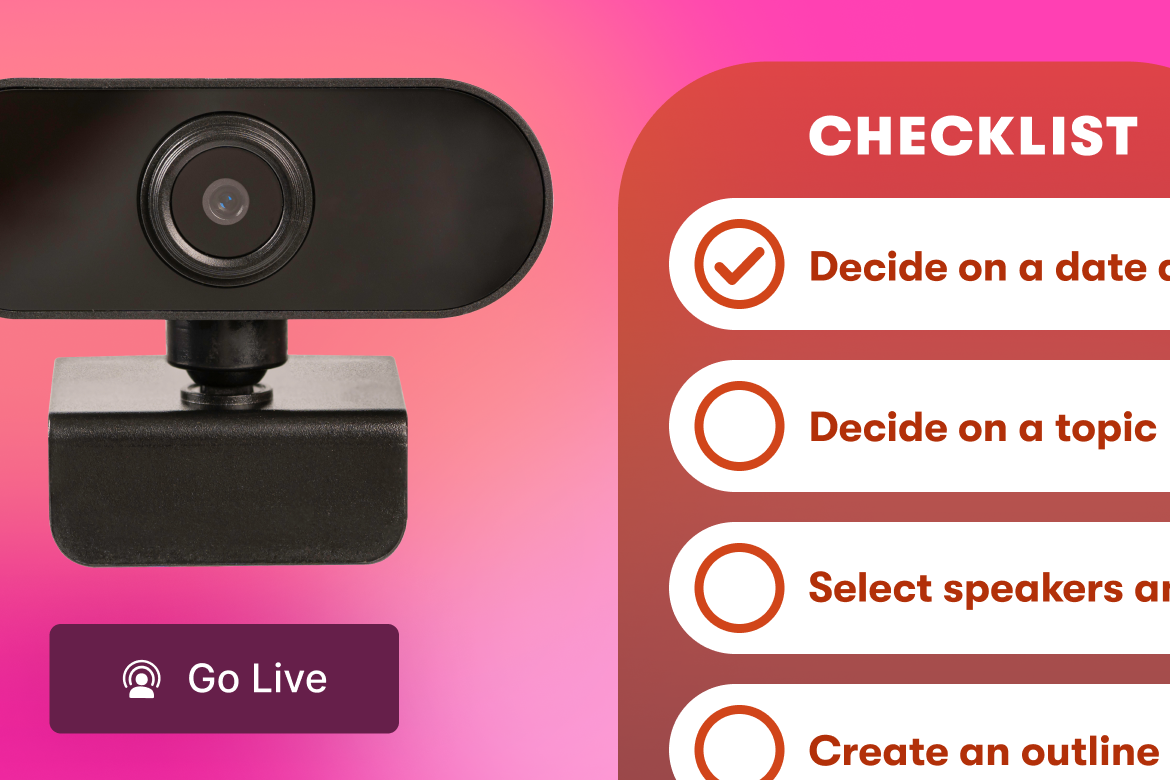State of Video Report: Video Marketing Statistics for 2025
Get the latest video marketing trends, insights, and benchmarks you need to create a winning video strategy this year.
What’s working (and not working) in video marketing right now?
To find out, we surveyed over 1,300 professionals from many industries, dug into over 100 million videos uploaded to Wistia, and then packed all that data into our 2025 State of Video Report.
What we learned
- Video is how most people want to communicate. It’s easier to consume than text and more engaging than audio.
- Viewers have higher expectations. If a video doesn’t deliver a message quickly, they bounce.
- More companies are bringing video production in-house. With tools popping up everywhere and companies investing more money in video, it’s easier than ever to make great content with or without help from video experts.
- Companies are trying to keep up with the growing demand for video. Many are turning to AI to streamline their process and repurposing their videos into multiple versions and formats.
Now that you’ve got the big picture, let’s dig into some interesting data and takeaways that can change the way you approach video this year.
How videos are performing
We asked marketers to pick the top metric they use to gauge the success of their videos. The most popular choices were:
- Engagement rate: The average amount of a video people have watched
- Conversion rate: The percentage of viewers who take action while watching a video
- Play rate: The ratio of people who press play to those who just scroll past a video
It also turns out that more than half of marketers connect their video platform to their customer relationship management (CRM) or email marketing tool to track video analytics alongside their other marketing data.
To get a clear picture of what good video performance looks like, we analyzed Wistia’s video uploads and pulled benchmarks for each key metric:
Engagement rates
The longer the video, the lower the engagement rate.
This doesn’t mean shorter is always better! A 10-minute video with a lower engagement rate still gets more total watch time than a 1-minute video with a higher engagement rate. Just remember to deliver your main message before most viewers start to tune out.
The most engaging types of videos
Out of all the videos uploaded to Wistia, how-to videos kept viewers watching the longest. On average, viewers watched:
- 82% of a how-to video under one minute
- Over 50% of a how-to video between 1 and 30 minutes
Company culture, educational, original series, and product videos up to five minutes also held strong, with viewers watching about halfway through.
For videos 30–60 minutes long, educational and how-to videos tied for the highest watch time at 26%.
Conversion rates
The best way to convert a viewer is to put an interactive feature right into your video. To find out what’s working well, we looked at the interactive features that Wistia users put in their videos:
- Call to action (CTA): A clickable image or text overlay that encourages viewers to take the next step, like booking a demo or downloading an asset
- Lead generation form: A skippable or unskippable form that asks viewers for their contact information
- Annotation link: A small clickable button that sends viewers to a relevant resource — good for building authority when citing a source
Which interactive video feature converts the most?
Lead gen forms get the best results, with nearly a quarter of viewers completing them.
That doesn’t mean they’re the only tool worth using, though. Annotation links and CTAs are still great for getting viewers to take the next step.
Where’s the best place to put an interactive video feature?
Interactive video features work best at the end of a video.
People who watch all the way through are already engaged and more likely to take action. Plus, an interactive feature at the end feels like a natural next step instead of an interruption.
Which video length converts the most viewers?
Videos that run between 30 and 60 minutes are the best at converting viewers.
This might be because longer videos attract engaged viewers who are more likely to take action when prompted. Plus, people are more willing to fill out a lead gen form to access a longer video.
The best placements for lead gen forms
Speaking of the highest-converting interactive feature, we looked at our data and found the best places to put your lead gen forms based on video length:
- The end of a 60+ minute video (65% conversion rate)
- In the 3rd quarter of a 1–3 minute video (58% conversion rate)
- Between the 1st and 4th quarter of a 60+ minute video (40%-45% conversion rate)
Which types of videos drive the most conversions?
Original series and webinars convert the most viewers. This tracks with our findings that long videos tend to perform best, especially when a lead gen form appears at the end.
Play rates
Over one in five people who come across a video choose to watch it.
But that’s just on average. Where you put your video can make a big difference in how many visitors hit play.
To find out where videos get the most plays and engagement on a website, we uncovered the 10 most common types of web pages where companies put their videos and pulled the average metrics for each one:
Videos on course pages, video galleries, and contact pages get the highest play rates, and viewers generally get about halfway through them.
- Videos on product and thank you pages don’t get as many plays, but people who watch them tend to stay engaged.
- Customer testimonial videos on case study pages keep viewers engaged almost halfway through, which shows us that they’re valuable and worth the investment.
- Videos in galleries and on blog posts and landing pages see engagement rates above 40% on average. Most visitors to these pages are already interested in the content, so they’re more likely to watch.
Want more data?
You’ll find a lot more video stats and insights in the full report.
How companies are making videos
Now, it’s time to look at how companies approached video creation in 2024 and where they’re headed in 2025.
Let’s talk AI
Last year, only 18% of the professionals we surveyed were using AI to create videos. That number jumped to 41% this year, and 19% will start soon.
Among those who use AI, most primarily rely on it for either pre-production planning (think scripting and brainstorming) or post-production editing (like voice dubbing and generating visuals).
Only 15% say post-production distribution — things like adding captions and generating metadata — is their main use for AI.
That’s not to say professionals are sleeping on using AI to get their videos ready for distribution. Over 60% have used or plan to use it to generate captions, and more than 30% have used or plan to use it to translate dialogue into multiple languages.
Accessibility
Speaking of captions, they’re the top accessibility feature Wistia users add to their videos.
The use of captions in videos has increased 572% since 2021. More marketers are also using high-contrast player colors to improve their video accessibility.
In fact, videos these days are more accessible than ever. Nearly half of all videos uploaded to Wistia in 2024 have at least three accessibility features added to them — that’s a jump from 11% in 2021.
Video resolution
Based on videos uploaded to Wistia in 2024, full HD 1080p is still the go-to resolution. Vertical HD (1080x1920) continues to gain momentum, with 51% more uploads than last year. 4k videos saw a 19% boost. On the other hand, 720p videos dropped by 10%, and square videos declined slightly by 2%.
How much money did companies spend on video production?
Nearly half of companies spent under $5,000 producing videos last year. Just over a third spent more than $5,000. The rest didn’t have an exact video budget, likely because it was lumped into a broader marketing budget.
Companies’ budget plans for 2025
Only 5% of companies are cutting their video budgets this year, while over half are investing more in video.
Who makes videos at a company?
Almost three-quarters of companies make videos in-house. Most of them have video crews, creative teams, or individual contributors handling production. The rest leave it to departments or teams that want to take it on.
Just over a quarter of companies outsource video creation to freelancers or video production agencies.
What influenced the types of videos companies created in 2024?
Instead of relying on a single factor, most companies considered multiple influences when deciding what videos to create.
It’s clear that for many companies, strategy comes first. They aren’t just making videos reactively. They’re also aligning them with long-term goals, product launches, and customer needs.
The most common video types created in 2024
Educational, product, and social media videos, as well as webinars, took the top spots, with over half of companies creating them regularly.
The most successful types of videos
When sharing which types of videos contributed the most to their company’s success, many professionals named more than one.
Product videos led the way, followed closely by webinars/live streams and educational videos.
Social media videos and customer testimonials came next, with about a third and a quarter of professionals, respectively, attributing their success to these formats.
Sitting at the bottom of the list are online courses, sales videos, support videos, company culture videos, podcasts, and original series.
Types of videos companies will create in 2025
This year, professionals are doubling down on the same five video types that proved most successful: product videos, social media videos, educational videos, webinars/live streams, and customer testimonials.
Podcasts and original series are the least common choices, with only a small percentage of companies planning to make them.
Creating videos vs. promoting them
Just over half of marketers spend more time creating videos than promoting them.
It’s common for marketers to churn out new videos for social media instead of getting more mileage out of their existing videos.
But AI might change that. It’s now easier than ever to resize videos, pull clips from longer videos, dub over lines, and more.
What’s holding professionals back from making more video content?
The demand for video is rising, and professionals are struggling to keep up. Besides time, the biggest roadblocks are limited resources, budget constraints, and technical challenges.
The go-to tools for creating videos
When making videos, professionals rely on Adobe tools, CapCut, Canva, Descript, and Frame.io the most.
Podcasting
Let’s switch gears and dig into the data we uncovered about how companies are podcasting these days.
Just over a quarter of companies have a podcast, and 10% are planning to launch one in 2025.
Yep, most companies don’t do podcasts. Their biggest reason is that they don’t have enough time. Their next biggest reasons are a lack of production resources, no buy-in from stakeholders, and no room in their budget.
Out of those who do podcasts, nearly half do it to position themselves as thought leaders. The next biggest reason is building brand affinity.
Much fewer see podcasts as a sales tool. Only 15% use them to generate leads and demand, and 6% use them to support their sales teams.
Dig into more data
Our full report has even more video marketing insights and benchmarks that’ll help you strengthen your video strategy this year.
Where companies are sharing their videos
Social media and company websites are the go-to places to distribute videos, with most companies using both. Email is another popular channel.
Where are companies putting videos on their sites?
To find out, we looked at the 10 most common web pages where Wistia users place videos and the average percentage of visitors who press play on those pages.
Home pages, product pages, and blogs are the most popular spots to embed videos — but some of the highest play rates come from less common placements. Take contact pages, for instance. Only 3% of companies have a video on their contact page, but they see some of the highest play rates. The same goes for course pages and video galleries.
Keyword research platform Semrush found out that video is taking over U.S. mobile search results. Short-form videos lead the charge with triple-digit growth in visibility over two years from 5% to 15%.
Their findings suggest that Google is prioritizing videos — especially short-form ones — in U.S. mobile and desktop search results. It’s time to think about adjusting your strategy to make sure the videos on your site show up in search results!
The most popular social platforms for sharing videos
YouTube, LinkedIn, and Instagram are at the top of the list, with more than half of companies posting videos there.
Interestingly, less than a quarter of companies share videos on the video-heavy platform TikTok. This suggests that companies are still prioritizing more established social platforms that support long-form videos and cater to professional audiences.
Resizing videos
It seems that most professionals have figured out that adjusting the aspect ratio of a video for different social platforms can help increase engagement.
Out of the 71% of professionals who resize their videos for different social platforms, over half do it for Instagram.
Webinars
Webinars are a pretty big deal. Marketers rated them as the second most impactful type of video.
No surprise, then, that more than half of companies host webinars. Let’s take a closer look at how they do it.
46% of those companies go live at least once a month, and 40% have a dedicated individual running the show.
The most popular types of webinars are focused on educating viewers.
This strategy directly supports the top reasons companies go live: engaging prospects and customers, generating leads for sales, building brand awareness, and showing off industry experience.
Despite their impact, webinar budgets stay lean. 8 out of 10 companies spent up to $10,000 on webinars last year.
When it comes to webinar software, Zoom Webinars leads the pack, used by about a third of marketers.
On-demand webinars
Almost 90% of marketers reuse webinar content — and for good reason. About 40% of webinar views happen on demand.
The most popular approach is adding on-demand recordings to landing pages, followed by creating social clips.
Nearly half of marketers also include recordings in email campaigns, while roughly a third embed them in blog posts.
Download your free copy of the report
That’s a wrap on the big takeaways! We hope you’re feeling inspired (and maybe a little nerdy about video). We’ve covered a lot, but there’s still plenty more to dig into.
Grab the full report to get even more trends, insights, and benchmarks that’ll help you level up your video strategy this year.






